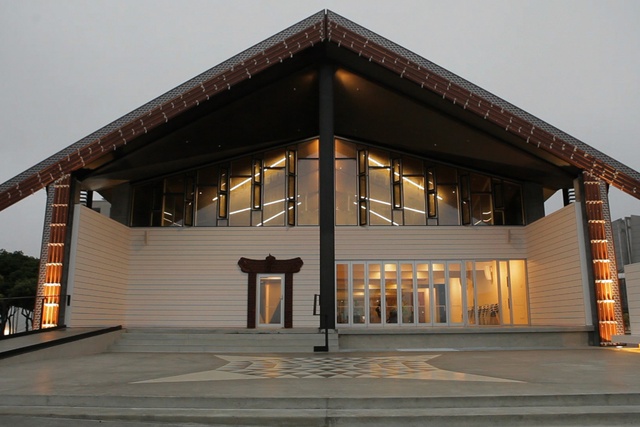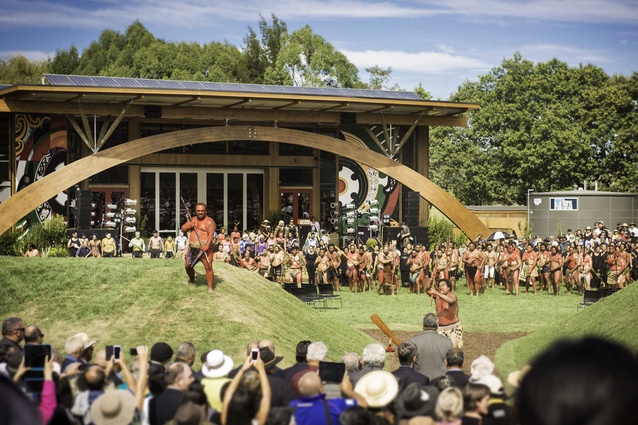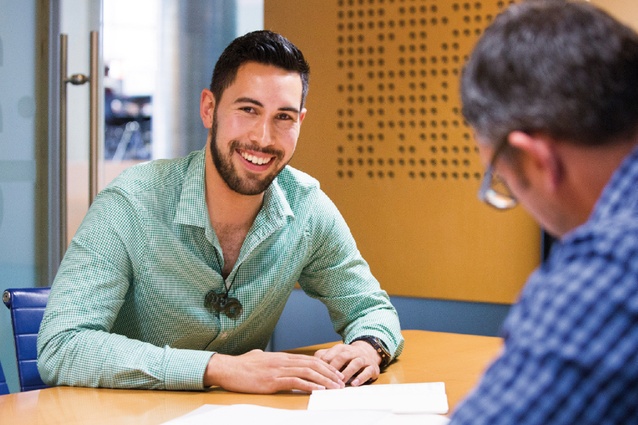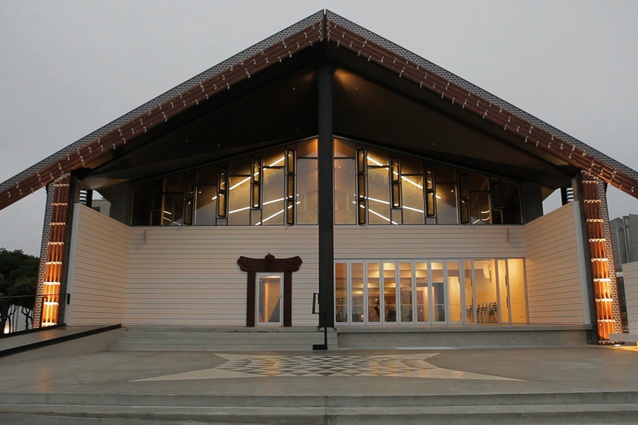Rameka Alexander-Tu’inukuafe on…“A Ngā Tamatoa perspective on Māori architecture”

I recently discovered an article from 20 years ago, entitled ‘Relish the difference’, published in Architecture New Zealand, March/April 1994 (p. 70), in which Rau Hoskins discusses biculturalism with Mike Barns, Tony Ward and Peter Maher. I would compare this
group to an architectural version of the Māori activist group Ngā Tamatoa, which stood up for Māori rights in the 1970s.
I very much admire the perspective of the 1994 article and how it cuts to the chase: “In terms of the Treaty, we shouldn’t be sitting here talking to you today about the need to promote architecture in your magazine or talk about it: you should be able to look out the window and it’s there,” states Mike Barns.
Tony Ward adds: “Whoever controls the resources, controls the culture… The notion of biculturalism is meaningless unless you have equality of access and control over resources – without this, partnership cannot exist.”
Barns explains that Māori people are acquiring a large proportion of the natural resources in this country and suggests: “Within 20 years, Māori are going to own a large proportion of the public assets, probably around 30 percent. Why are we churning graduates out of the architectural schools who know nothing about Māori as clients?”
The article is also critical of the way Māori culture is appropriated within New Zealand architecture: “Leave bicultural design alone unless you’re really prepared to do your homework, really prepared to come inside the culture, because, if not, it just falls into the ‘isms’ of the day,” states Rau Hoskins.
Tony Ward suggests: “Nothing will change unless we make people feel uncomfortable and face up to the fact that, if they don’t take a stand against racism, they support it. There’s no halfway measure. We live in a racist society and it’s in all of our interests to struggle and fight against that.”
But Ward is also hopeful about the future of Māori architecture, stating, “We’re talking about a different way of approaching design, where what results emerges from the people themselves, and the architect is merely the vessel whereby that happens: the servant of the people, the mouthpiece of the people…not separate from them… part of them, bound into them, intimately connected with their culture, loving it, valuing it for its difference.”
So, the question is, “Has there been progress since this 1994 ‘bicultural architecture’ discussion?”
In terms of Māori architecture being more visible, we have people like Rau Hoskins and Rewi Thompson at the forefront of that, the airing of the Whare Māori television documentary series, ‘Te Hononga’ Māori architectural studio at Unitec, the recent Venice Biennale kaupapa led by David Mitchell, Rau Hoskins and others, Deidre Brown’s Māori Architecture book, the Te Aranga Māori Design Principles, and Ivan Mercep and Tūhoe descendant Brendan Himona’s landmark Te Kura Whare – Tūhoe’s living building. Also, the number of Māori architectural students graduating from universities is increasing steadily.

However, if you take people like Rau from the equation, along with other Māori practitioners, would there have been as much progression? I would suggest that not as much would have been achieved without Māori driving this. The recent memorandum of understanding between Ngā Aho (Māori design practitioners) and NZIA is a perfect case in point; if it weren’t for Māori practitioners pushing for this, then it wouldn’t have happened. And I don’t think we will see a big shift until we see the changing of the guard across the board, be it in education, the NZIA and the profession, including gaining more Māori architects, skilled in both Te Ao Māori and Te Ao Pākehā, in positions of influence within architectural practices.
To really achieve buy-in, we need more Māori architects changing things from the inside of established practices – such as in Jasmax where I work – who can influence the wider industry. This can be achieved also in the architecture schools and, with the Auckland Council, Ngā Aho and, hopefully, the NZIA coming on board, will assist in ensuring the Te Aranga Māori Design Principles are a recognised engagement and design framework throughout the architecture and design industry. This will help both Māori and non-Māori designers engage with iwi, mana whenua and Māori clients, and should see a change in the built environment, with outcomes becoming more refined over time.
The other big influence will be iwi themselves, where we will have big clients being Māori tribal organisations, which aren’t there just to make up the numbers or to be problematic stakeholders (in the eyes of some) but which are leading projects and demanding that our built environment reflects Māori values. There is no reason why there shouldn’t be more purpose-built tribal/cultural centres and iwi-led commercial projects, such as those Tūhoe has been able to achieve to date and which have been outcomes of its Treaty settlement.
Ultimately, I’d love to see more built environment projects where there are Māori clients and stakeholders, and Māori designers with a kaupapa Māori (purpose). Rau spoke of this in a recent Unitec research publication1, where he defined “Māori architecture as anything that involves a Māori client with a Māori focus”.
What’s exciting is that I don’t think this is too far away. I can think of at least 10 Māori graduates – with a range of tribal affiliations and of various levels of experience – who, in the next five to 10 years, will reach a point where they can lead the design of a range of projects. Why shouldn’t there be an architectural and design practice of the scale of Jasmax with Māori aspirations as its focal point and with Māori architects and designers leading the way?
Alongside this, and with the best resources and technical expertise, I think iwi would be keen to work with a practice like this. There wouldn’t be a need for a constant dialogue and translation of Māori concepts between mainstream designers and Māori cultural consultants (not unless we can ensure that Māori concepts are embedded within architectural education). This would mean that more time is spent in the articulation of Māori architecture, rather than, as it is with the current status quo, in constantly educating and upskilling others.
Also, Māori architecture will go down a direction whereby a Māori architectural language will develop that is specific to a rohe or a tribal area, much in the way the language is, or even in the way carving styles can be traced to certain areas, iwi and carvers. In the-not-too-distant future, Tūhoe will have a team of architects and engineers, etc., which is engaged clearly in its unique Tūhoe world view and which will have the right skills and knowledge to lead the design of a range of commercial and residential developments.
There also should be a place for tohunga whakairo – master carvers – to form an integral part of the design process. We can return also to more traditional Māori practices whereby architect, engineer, builder and carver were one in the same or, at least, arrive at a position where these experts work collectively, rather than in isolation.
So what could be an ongoing vision for Māori architecture over the course of the next 20 years? For both Māori and non-Māori architectural practitioners, we have reached a crossroads of sorts. There now exists an opportunity to let go of past mamae – hurt, prejudices, distrust, insecurities and, in some cases, racist and narrow-minded views – and to embrace the new opportunities that exist within the exciting new world of the Te Aranga Māori Design Principles era and the growing post-Treaty settlement, iwi-driven economy.
From a Māori perspective, we need iwi, tertiary institutions and industry bodies, such as the NZIA, to recognise the value of investing in architectural students and graduates. We also need our Māori graduates to carry on in the footsteps of both Māori and Pākehā architectural practitioners such as Rewi Thompson, Rau Hoskins, Brendan Himona and Ivan Mercep, as well as to become the next generation of Ngā Tamatoa – Māori architectural activists creating new pathways for Māori within the architecture industry.
For our Treaty partners, I would suggest you either hop on the waka while you can or you might be left behind. And, if you’re smart, you will start hiring and supporting Māori architects, graduates and students with the knowledge that Aotearoa New Zealand is changing quickly and a large number of property developers, clients, key stakeholders and potential business partners will be sophisticated, educated and culturally connected Māori.
No reira ka mutu tenei whakaaro whakatoi mai i tēnei tamaiti no Te Tai Tokerau, i roto i nga kupu rongonui o te rangatira nei a Tamati Kruger. To conclude and to symbolise the opportunity that exists for us all, I leave you with a proverb that was used recently by Tūhoe chief negotiator Tamati Kruger: “Let these words guide our way to a greenstone door – tatau pounamu –which looks back on the past and closes it, which looks forward to the future and opens it.”
1. Advance: Research with Impact, Spring 2014, ‘A Māori Approach’.












